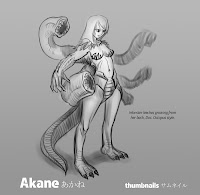I started playing the Blue version way back in Primary School.I remember skipping meals just to save up money to buy a Gameboy Pocket and the game cartridge. While I did not manage to catch 'em all, I had a lot of fun battling with my friends, with most battles ending in a classic final showdown between Mewtwo and Mewtwo. I did play all the subsequent versions, but the original generation of Red Blue and Yellow holds a special place in my heart.
When I saw this Zelda collage that was created to commemorate the 25th anniversary of that series, I was blown away. This is a piece of Zelda fanart that can end all Zelda fanarts. The sheer amount of details that are crafted into this super awesome artwork is staggering. I can really tell that the artist is an avid fan of the series.
Thus, when my digital painting lecturer called for a personal project as our final assignment, I immediately jumped onto the idea of creating a Pokemon fanart that tries to emulate the epic-ness of the Zelda collage. Multi-figure composition is also another field of study that I hope to explore in. I have always found difficulty trying to portray multiple characters within the same space of the painting, and I was hoping to learn a thing or two when constructing this piece of fanart.
I had several ideas of how the collage piece can look. The original one was to place the characters in a fashion similar to that of the Sistine Chapel ceiling. I remember reading about the Zelda Collage on Kotaku, and one reader commented that if there was a St. Peter's for games, that collage would definitely be on the Sistine Chapel. I played around with the idea a little, but realized that the characters and scenes are too separated, which goes against my multi-figure learning objectives.
 |
| The sketch is so rough, that you probably can't tell what's going on |
I usually start a piece of artwork with very loose and sketching lines. Very often, the only person who knows what is going on in these thumbnails is myself, therefore I rarely, if ever, show these to anyone.
I then go on to refine the drawing until it is the viewer can recognize each character just by the lineart. This is the phase where I try to get all the problem solving done. It is always very difficult to try to correct drawing errors during the painting stage, so I try to minimize that by doing a very clean sketch.
Next, I do a quick color test, slapping in tones to suggest the where the lighting is coming from. I switch back and forth constantly between color and grayscale to check on the tonal values. I also keep another window of the artwork, displaying at a smaller resolution, at the side of the screen to make sure that the entire composition reads. This is important as there are many characters present here, and I want to make sure that Ash is always the center of attention.
 |
| And finally, the finished piece |




















































